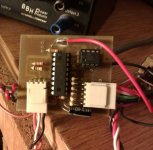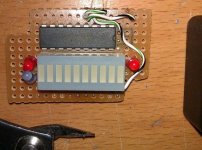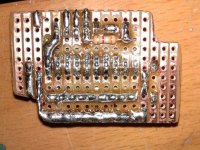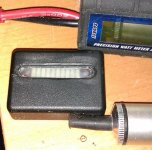I would like to register my interest in making this fuel gauge meter. I hope that I have something positive to bring to this group/concept. I can make a small batches of thingymigics. Hope it is not like taking coal to Newcastle, with so many interested parties. I have had the LED bar display in my plane as a MAC trim position display. I did not like it for two reasons. Poor visibility in the sun and relative small dimensions. I made discrete LED display of the trim and electric flap position indicator. I preffer spacing of the individual LEDs with gaps, to achieve registration in the peripheral vision rather than the need to look at it directly. And I use the Picaxe in some of my light strobe devices.
So here is an outline of my concept:
1. discrete multicolour 10 LED dispaly of the current - green, yellow, red
2. discrete multicolour 10 LED display of the power remaining - green, yellow, red
3. separate yellow LED to indicate less than 10% power remaining
4. reset button to press after the battery charge
5. 4-6 wire connector RJ11 or RJ14
This would be mounted in a small box say 50x50x20mm or 50x80x25 on handlebars with wire going to the battery/controller.
The Voltage would be selected by option link to say 24, 36, 48 and 72V with trimpot for a fine adj.
The Current gain will have trimpot for the max. scale adjustment.
There will be a separate current shunt inserted in the battery connection to reduce the DIY demand to tap the existing controller shunt. The purists, who would not like to loose some 0.15V on the external shunt will be able to solder sensor wires directly onto the controller shunt. This way the need for a programming the Picaxe chip would be minimised and the final configuration easily done DIY.
I would appreciate your comments to the general concept, what to add, or take away.
I am not very fast, and I have already few projects going on, so I cannot promise to have it ready yesterday.
otto










